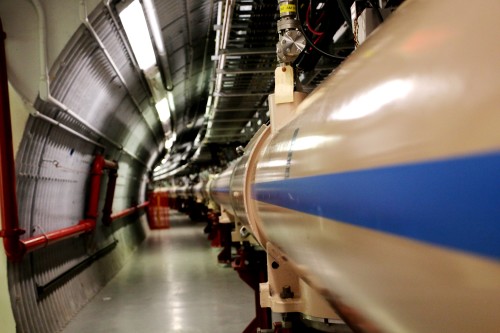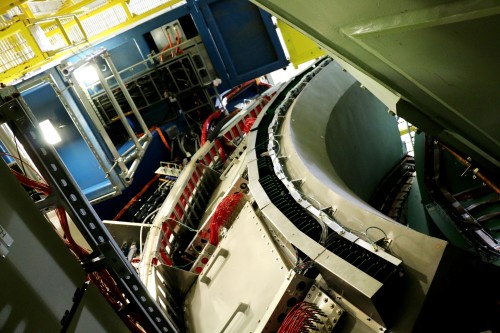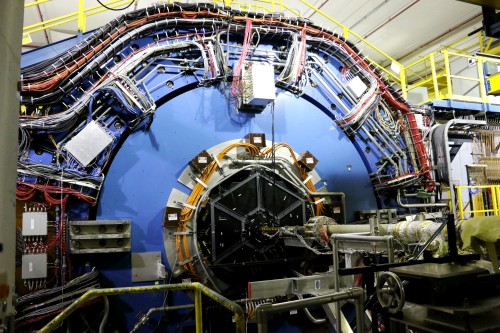
Beam me down: in the RHIC tunnel. (Courtesy: Tushna Commissariat)
By Tushna Commissariat in New York City, US
I’m not one to rejoice in someone else’s misfortune, but I must admit that I couldn’t help but be a bit pleased when I heard that the Relativistic Heavy Ion Collider (RHIC) at the Brookhaven National Laboratory (BNL) had a malfunction last Friday. You see, I happened to be visiting the collider and its detectors yesterday, and if a malfunctioning superconducting magnet had not shorted a diode last Friday, I would not have had the chance to go down into the collider tunnel, which was a great experience.
RHIC – which, along with the Large Hadron Collider at CERN, is the only other detector capable of colliding heavy ions and is, in fact, the only spin-polarized collider in the world – has been running since the year 2000, and accelerator director Wolfram Fischer tells me that I am rather “lucky” as “failed magnets are very rare”. Indeed, he said that after initial teething problems when RHIC was switched on, this was the first such magnet failure that has occurred in the past 15 years. But fear not, the RHIC maintenance crew is already hard at work – the diode will soon be replaced and the collider should be up and running again in the next few days.
Normally, the collider would have been running at this time – Fischer explains that a “good budget year” allows them to run the collider for nearly 22 weeks and during that time the data are taken 24/7, with each shift lasting about nine hours. I also visited the lab’s Scientific Data and Computing Center that actually records, analyses and archives the huge number of data produced at RHIC (and some of the data produced by the LHC’s ATLAS detector) and is a key component of the whole operation.

Last view: one section of the PHENIX detector. (Courtesy: Tushna Commissariat)
The current shutdown also let me visit the two main detectors along the ring – STAR and PHENIX. Both STAR and PHENIX study the unique and strange substance known as a “quark–gluon plasma” (QGP) – which is thought to mimic conditions in the early universe, moments after the Big Bnag – that forms when heavy ions collide head-on. Being able to see PHENIX was particularly interesting as the detector, in its current form, will be decommissioned once it finishes its current run around June or July this year. It will then undergo a massive upgrade over the next few years, only to re-emerge as the sPHENIX (or super PHENIX), which should be taking data by 2022. The sPHENIX upgrade will allow the researchers to tease out some details of what a gluon cloud actually looks like in 3D, while also studying the interactions of certain high-energy particles within the plasma, and also improving the device’s acceptance, so that it will actually pick up all particle jets.

Starry-eyed: the STAR detector, with the RHIC beamline at the centre. (Courtesy: Tushna Commissariat)
While this upgrade takes place, STAR will be running at some of the lowest energies possible: the detector’s range extends from 200 GeV ( its normal running energy) to a meagre 7.7 GeV. The idea behind this is to see if STAR researchers can detect an elusive, poorly predicted and never-seen-before “critical point” second-order phase transition in the QGP – this is analogous to the “triple point” of water. Hints of this point from previous experimental data suggest that, if it exists, it would occur at around 20 GeV and if found, it would be a huge breakthrough in the field.
Today, I am back at BNL, visiting its Center for Functional Nanomaterials and its National Synchrotron Light Source II, so check back later to see what goes on at these facilities.
The Quark-gluon plasma found at the RHIC is rather a strongly interacting liquid like that of the Liquid Drop Model in nuclear physics, still quite far away from the “asymptotic liberty” state, when the strong interaction between the partons goes to zero and the plasma behaves like a non-interaction Fermi gas.